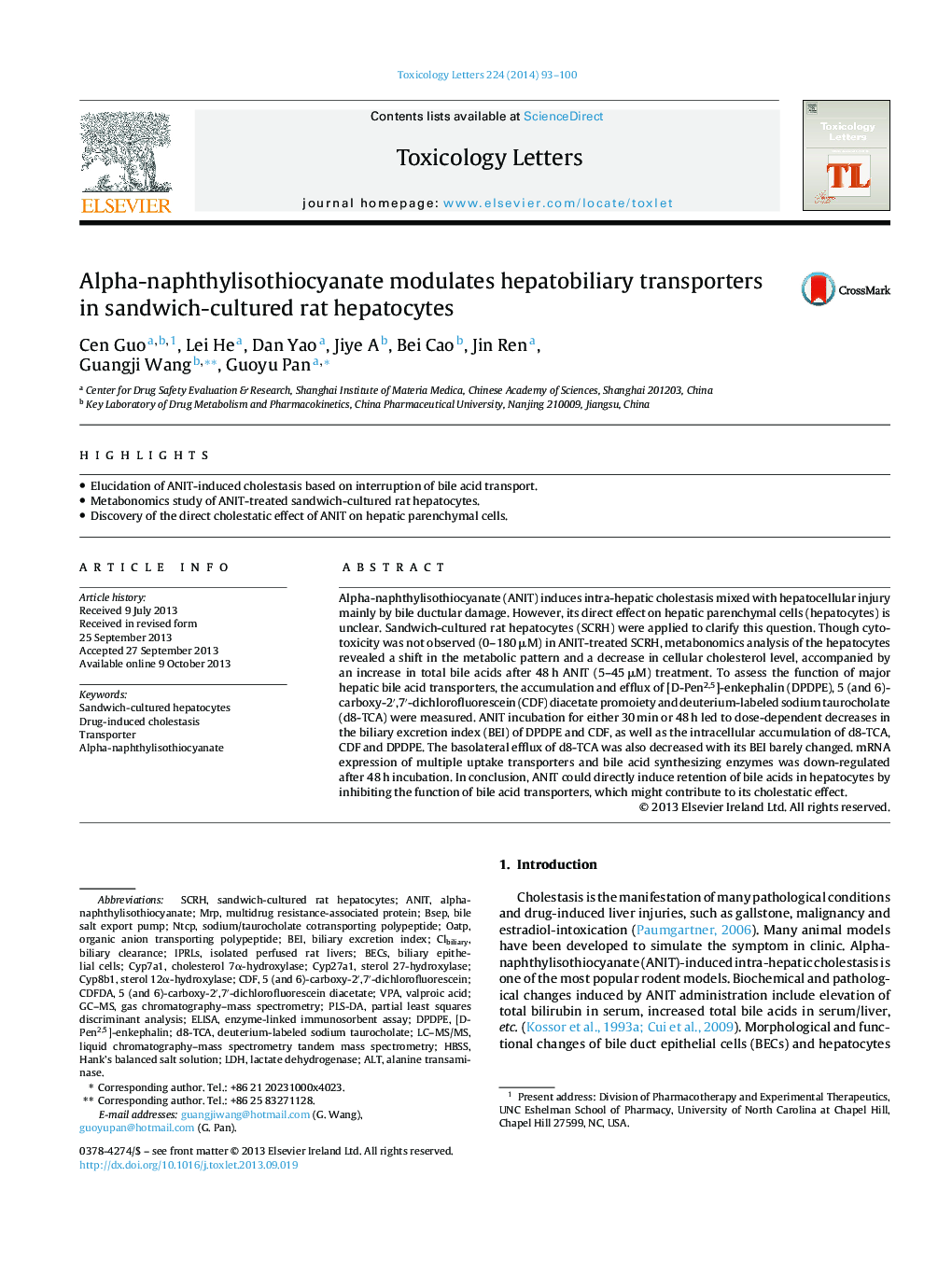| Article ID | Journal | Published Year | Pages | File Type |
|---|---|---|---|---|
| 2599118 | Toxicology Letters | 2014 | 8 Pages |
•Elucidation of ANIT-induced cholestasis based on interruption of bile acid transport.•Metabonomics study of ANIT-treated sandwich-cultured rat hepatocytes.•Discovery of the direct cholestatic effect of ANIT on hepatic parenchymal cells.
Alpha-naphthylisothiocyanate (ANIT) induces intra-hepatic cholestasis mixed with hepatocellular injury mainly by bile ductular damage. However, its direct effect on hepatic parenchymal cells (hepatocytes) is unclear. Sandwich-cultured rat hepatocytes (SCRH) were applied to clarify this question. Though cytotoxicity was not observed (0–180 μM) in ANIT-treated SCRH, metabonomics analysis of the hepatocytes revealed a shift in the metabolic pattern and a decrease in cellular cholesterol level, accompanied by an increase in total bile acids after 48 h ANIT (5–45 μM) treatment. To assess the function of major hepatic bile acid transporters, the accumulation and efflux of [D-Pen2,5]-enkephalin (DPDPE), 5 (and 6)-carboxy-2′,7′-dichlorofluorescein (CDF) diacetate promoiety and deuterium-labeled sodium taurocholate (d8-TCA) were measured. ANIT incubation for either 30 min or 48 h led to dose-dependent decreases in the biliary excretion index (BEI) of DPDPE and CDF, as well as the intracellular accumulation of d8-TCA, CDF and DPDPE. The basolateral efflux of d8-TCA was also decreased with its BEI barely changed. mRNA expression of multiple uptake transporters and bile acid synthesizing enzymes was down-regulated after 48 h incubation. In conclusion, ANIT could directly induce retention of bile acids in hepatocytes by inhibiting the function of bile acid transporters, which might contribute to its cholestatic effect.
